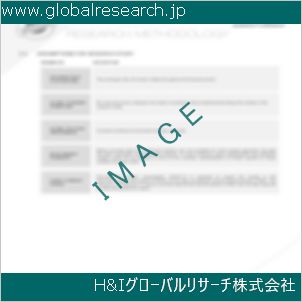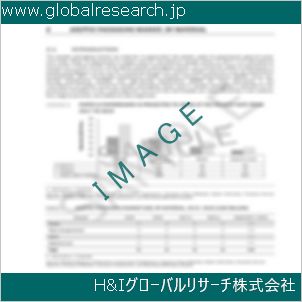Table of Contents
1 Industry Overview of Argon
1.1 Definition and Specifications of Argon
1.1.1 Definition of Argon
1.1.2 Specifications of Argon
1.2 Classification of Argon
1.3 Applications of Argon
1.3.1 Nuclear Application
1.3.2 Non-Nuclear Application
1.4 Industry Chain Structure of Argon
1.5 Industry Overview and Major Regions Status of Argon
1.5.1 Industry Overview of Argon
1.5.2 Global Major Regions Status of Argon
1.6 Industry Policy Analysis of Argon
1.7 Industry News Analysis of Argon
2 Manufacturing Cost Structure Analysis of Argon
2.1 Raw Material Suppliers and Price Analysis of Argon
2.2 Equipment Suppliers and Price Analysis of Argon
2.3 Labor Cost Analysis of Argon
2.4 Other Costs Analysis of Argon
2.5 Manufacturing Cost Structure Analysis of Argon
2.6 Manufacturing Process Analysis of Argon
3 Technical Data and Manufacturing Plants Analysis of Argon
3.1 Capacity and Commercial Production Date of Global Argon Major Manufacturers in 2023
3.2 Manufacturing Plants Distribution of Global Argon Major Manufacturers in 2023
3.3 R&D Status and Technology Source of Global Argon Major Manufacturers in 2023
3.4 Raw Materials Sources Analysis of Global Argon Major Manufacturers in 2023
4 Capacity, Production and Revenue Analysis of Argon by Regions, Types and Manufacturers
4.1 Global Capacity, Production and Revenue of Argon by Regions 2019-2024
4.2 Global and Major Regions Capacity, Production, Revenue and Growth Rate of Argon 2019-2024
4.3 Global Capacity, Production and Revenue of Argon by Types 2019-2024
4.4 Global Capacity, Production and Revenue of Argon by Manufacturers 2019-2024
5 Price, Cost, Gross and Gross Margin Analysis of Argon by Regions, Types and Manufacturers
5.1 Price, Cost, Gross and Gross Margin Analysis of Argon by Regions 2019-2024
5.2 Price, Cost, Gross and Gross Margin Analysis of Argon by Types 2019-2024
5.3 Price, Cost, Gross and Gross Margin Analysis of Argon by Manufacturers 2019-2024
6 Consumption Volume, Consumption Value and Sale Price Analysis of Argon by Regions, Types and Applications
6.1 Global Consumption Volume and Consumption Value of Argon by Regions 2019-2024
6.2 Global and Major Regions Consumption Volume, Consumption Value and Growth Rate of Argon 2019-2024
6.3 Global Consumption Volume and Consumption Value of Argon by Types 2019-2024
6.4 Global Consumption Volume and Consumption Value of Argon by Applications 2019-2024
6.5 Sale Price of Argon by Regions 2019-2024
6.6 Sale Price of Argon by Types 2019-2024
6.7 Sale Price of Argon by Applications 2019-2024
6.8 Market Share Analysis of Argon by Different Sale Price Levels
7 Supply, Import, Export and Consumption Analysis of Argon
7.1 Supply, Consumption and Gap of Argon 2019-2024
7.2 Global Capacity, Production, Price, Cost, Revenue, Supply, Import, Export and Consumption of Argon 2019-2024
7.3 USA Capacity, Production, Price, Cost, Revenue, Supply, Import, Export and Consumption of Argon 2019-2024
7.4 EU Capacity, Production, Price, Cost, Revenue, Supply, Import, Export and Consumption of Argon 2019-2024
7.5 China Capacity, Production, Price, Cost, Revenue, Supply, Import, Export and Consumption of Argon 2019-2024
7.6 Japan Capacity, Production, Price, Cost, Revenue, Supply, Import, Export and Consumption of Argon 2019-2024
8 Major Manufacturers Analysis of Argon
8.1 Manufacturer One
8.1.1 Company Profile
8.1.2 Product Picture and Specifications
8.1.2.1 Type I
8.1.2.2 Type II
8.1.2.3 Type III
8.1.3 Capacity, Production, Price, Cost, Gross and Revenue
8.1.4 Contact Information
8.2 Manufacturer Two
8.2.1 Company Profile
8.2.2 Product Picture and Specifications
8.2.2.1 Type I
8.2.2.2 Type II
8.2.2.3 Type III
8.2.3 Capacity, Production, Price, Cost, Gross and Revenue
8.2.4 Contact Information
8.3 Manufacturer Three
8.3.1 Company Profile
8.3.2 Product Picture and Specifications
8.3.2.1 Type I
8.3.2.2 Type II
8.3.2.3 Type III
8.3.3 Capacity, Production, Price, Cost, Gross and Revenue
8.3.4 Contact Information
8.4 Manufacturer Four
8.4.1 Company Profile
8.4.2 Product Picture and Specifications
8.4.2.1 Type I
8.4.2.2 Type II
8.4.2.3 Type III
8.4.3 Capacity, Production, Price, Cost, Gross and Revenue
8.4.4 Contact Information
8.5 Manufacturer Five
8.5.1 Company Profile
8.5.2 Product Picture and Specifications
8.5.2.1 Type I
8.5.2.2 Type II
8.5.2.3 Type III
8.5.3 Capacity, Production, Price, Cost, Gross and Revenue
8.5.4 Contact Information
…
9 Marketing Trader or Distributor Analysis of Argon
9.1 Marketing Channels Status of Argon
9.2 Traders or Distributors with Contact Information of Argon by Regions
9.3 Ex-work Price, Channel Price and End Buyer Price Analysis of Argon
9.4 Regional Import, Export and Trade Analysis of Argon
10 Industry Chain Analysis of Argon
10.1 Upstream Major Raw Materials Suppliers Analysis of Argon
10.1.1 Major Raw Materials Suppliers with Contact Information Analysis of Argon
10.1.2 Major Raw Materials Suppliers with Supply Volume Analysis of Argon by Regions
10.2 Upstream Major Equipment Suppliers Analysis of Argon
10.2.1 Major Equipment Suppliers with Contact Information Analysis of Argon
10.2.2 Major Equipment Suppliers with Product Pictures Analysis of Argon by Regions
10.3 Downstream Major Consumers Analysis of Argon
10.3.1 Major Consumers with Contact Information Analysis of Argon
10.3.2 Major Consumers with Consumption Volume Analysis of Argon by Regions
10.4 Supply Chain Relationship Analysis of Argon
11 Development Trend of Analysis of Argon
11.1 Capacity, Production and Revenue Forecast of Argon by Regions and Types
11.1.1 Global Capacity, Production and Revenue of Argon by Regions 2024-2029
11.1.2 Global and Major Regions Capacity, Production, Revenue and Growth Rate of Argon 2024-2029
11.1.3 Global Capacity, Production and Revenue of Argon by Types 2024-2029
11.2 Consumption Volume and Consumption Value Forecast of Argon by Regions, Types and Applications
11.2.1 Global Consumption Volume and Consumption Value of Argon by Regions 2024-2029
11.2.2 Global and Major Regions Consumption Volume, Consumption Value and Growth Rate of Argon 2024-2029
11.2.3 Global Consumption Volume and Consumption Value of Argon by Types 2024-2029
11.2.4 Global Consumption Volume and Consumption Value of Argon by Applications 2024-2029
11.3 Supply, Import, Export and Consumption Forecast of Argon
11.3.1 Supply, Consumption and Gap of Argon 2024-2029
11.3.2 Global Capacity, Production, Price, Cost, Revenue, Supply, Import, Export and Consumption of Argon 2024-2029
11.3.3 USA Capacity, Production, Price, Cost, Revenue, Supply, Import, Export and Consumption of Argon 2024-2029
11.3.4 EU Capacity, Production, Price, Cost, Revenue, Supply, Import, Export and Consumption of Argon 2024-2029
11.3.5 China Capacity, Production, Price, Cost, Revenue, Supply, Import, Export and Consumption of Argon 2024-2029
11.3.6 Japan Capacity, Production, Price, Cost, Revenue, Supply, Import, Export and Consumption of Argon 2024-2029
12 New Project Investment Feasibility Analysis of Argon
12.1 New Project SWOT Analysis of Argon
12.2 New Project Investment Feasibility Analysis of Argon
13 Conclusion of the Global Argon (CAS 7440-37-1) Industry 2024 Market Research Report
| ※参考情報 アルゴン(Argon)は、元素記号ArおよびCAS番号7440-37-1で知られる無色・無臭の気体です。周期表では18族に分類される希ガスの一種であり、自然界には非常に豊富に存在しています。ここではアルゴンの定義、特徴、種類、用途、関連技術などについて詳しく説明します。 アルゴンは、地球の大気中に約0.93%の割合で存在し、これは特に空気中の成分としては比較的高い割合です。最初に発見されたのは1894年で、イギリスの化学者ウィリアム・ラムゼイと彼の同僚によるものでした。彼らはアルゴンを窒素や酸素から分離する過程でこの元素を発見し、後の研究によってその特性が詳しく明らかにされました。 アルゴンの物理的特性として、常温常圧においては気体として存在し、非常に安定した性質を持つため、他の元素と化合しにくいという特徴があります。これは、アルゴンの原子が満たされている電子殻を持つため、反応する必要がないからです。このため、アルゴンは化学的に非常に惰性的であり、高温や反応性の高い状況下でも安定して存在することができるのです。 アルゴンの種類としては、主に天然アルゴンと人工アルゴンがあります。天然アルゴンは、主に地球の大気中に存在し、放射性崩壊によって生成されるアルゴン-40が約99.6%を占めています。一方、人工アルゴンは、特定の研究や産業目的のために生成されることがあります。人工的な方法としては、ガスの分離技術を用いた純度の高いアルゴンの製造が一般的です。 アルゴンの用途は非常に多岐にわたります。まず、工業用途としては、溶接や鋳造における不活性ガスとして利用されます。特に、TIG(タングステン・インert ガス)溶接やMIG(メタル・インert ガス)溶接の際に、アルゴンは溶接アークの安定化や熱の分散を助ける役割を果たします。また、アルゴンは金属やセラミックの加工にも利用され、製品の品質を向上させるために貢献しています。 さらに、アルゴンは医療機器やレーザー技術においても利用されています。例えば、アルゴンレーザーは皮膚の美容医療や眼科手術において重要な役割を果たし、精密で効果的な治療を可能にしています。これにより、視力回復手術などの分野での応用が拡大しています。 また、アルゴンは科学研究においても重要な位置を占めており、特に古環境学や地球科学の分野では、放射性同位体としてのアルゴンを使用した年代測定法が一般的です。この技術により、火山岩や堆積物の年月を特定することが可能になり、地球の歴史や変遷を理解する手助けとなっています。 さらに、アルゴンは食品業界でもその応用が広がっています。真空パッケージングやフード保存において、酸素を排除する目的でアルゴンを用いることで、食品の鮮度保持や保存期間の延長につながります。これにより、消費者に新鮮な食品を提供することが可能になります。 アルゴンに関連する技術としては、ガス分離技術や冷却技術が挙げられます。ガス分離技術は、アルゴンを他の気体から分離する際に使用され、特に空気からの分離が一般的です。このプロセスでは、膜分離法や、物理的吸着を用いた技術が利用されることがあります。また、冷却技術においては、アルゴンは冷却媒体としても使われることがあり、高性能な冷却システムにおいて重要な役割を果たします。 以上のように、アルゴンはその特徴的な性質から多くの分野で不可欠な元素となっています。医療、工業、科学研究、食品保存など、さまざまな用途に使用され、その応用範囲は今後も広がり続けることでしょう。アルゴンの技術的な進展により、私たちの生活における役割がさらに重要になることが期待されています。 |
❖ 免責事項 ❖
http://www.globalresearch.jp/disclaimer












